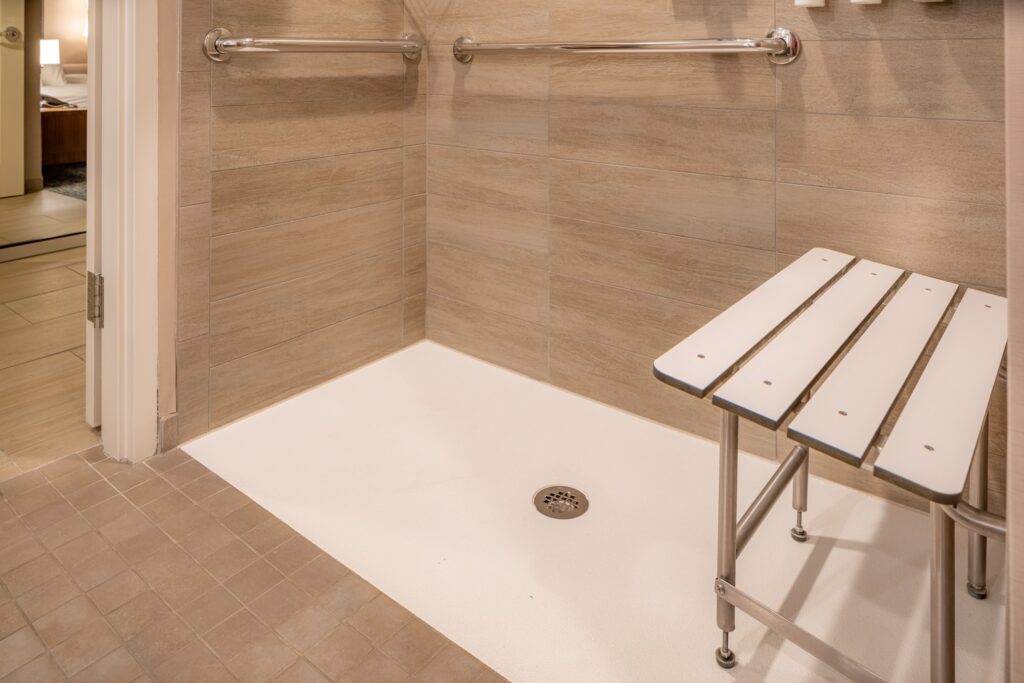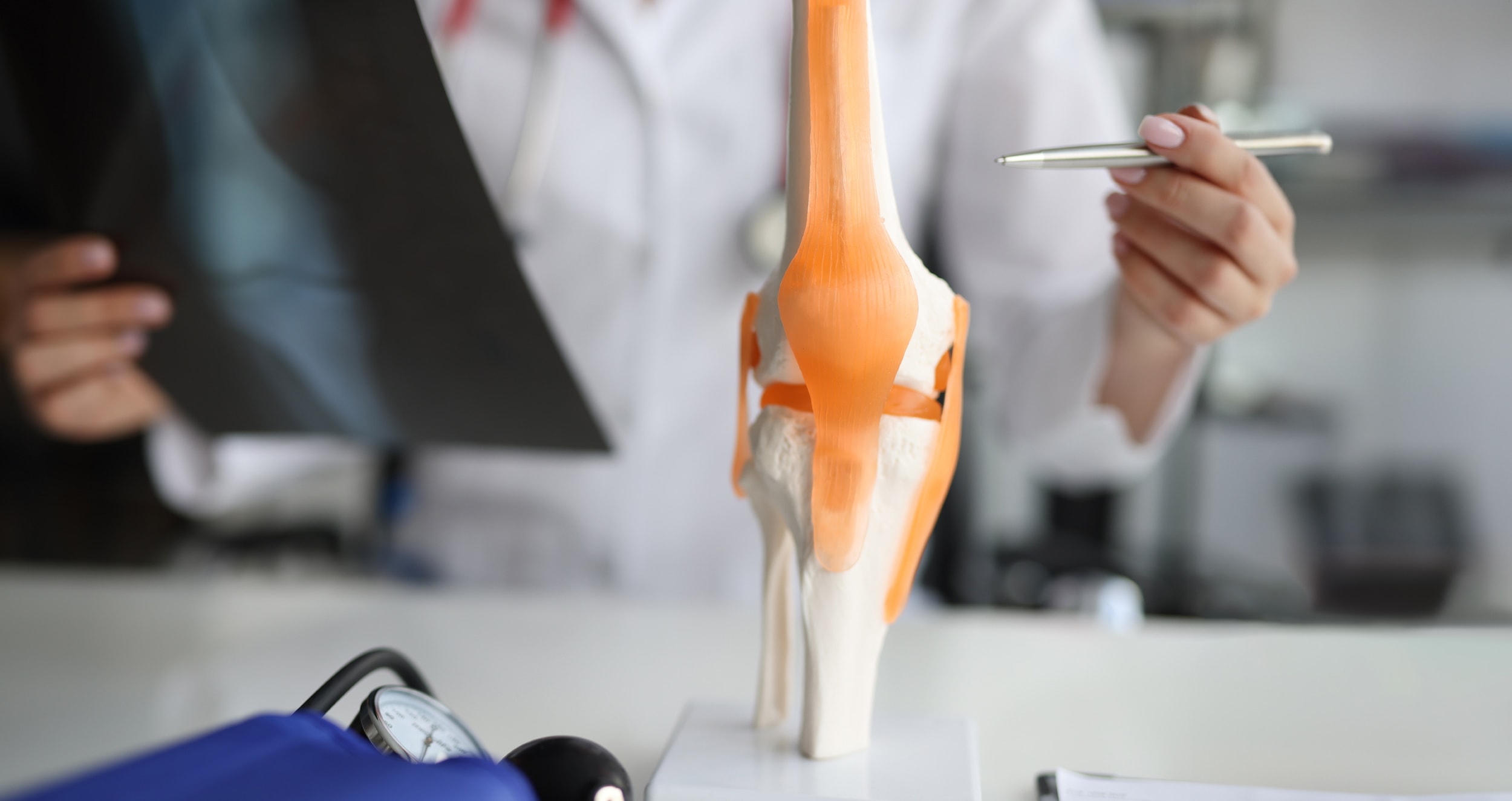Recovering from knee replacement surgery comes with many questions—how do you adapt to daily activities without stress on your new knee? Plancher Orthopaedics provides practical living with knee replacement tips for daily activities. Find out how you can transform your home into a recovery-friendly space, address mobility confidently, and maintain your overall health as you embark on this journey to regain your active life.
Key Takeaways
- Transform your home into a recovery-friendly space with grab bars, clear pathways, and suitable footwear to ensure safety and ease of navigation post-knee replacement surgery.
- Maintain independence through the strategic use of mobility aids and furniture adjustments, and manage daily activities with specialized tools and cautious movement techniques to foster knee recovery.
- Prioritize a holistic approach to post-surgery life by managing pain, following a balanced diet, engaging in low-impact exercises, and staying positive to maximize the longevity and benefits of your knee replacement.
Adapting Your Home for Knee Safety
Modifying the living space is not just about comfort; it’s a strategic move to ensure overall safety and effortless navigation with your new knee. Imagine your home transforming into a sanctuary of support, where grab bars become your steadfast allies in the shower and beside the toilet, and clear pathways echo the freedom of movement without the fear of trips and falls.
Adapting daily activities to the new knee is akin to learning a new dance, one that respects the limitations and celebrates the capabilities of your rejuvenated joint.
Footwear Foundations
Picture yourself gliding across your home with the grace of a dancer. The secret? Footwear that’s as supportive as it is non-slip, like ankle pumps. After knee replacement surgery, your shoes are not just an accessory; they’re the foundation of your stability.
Athletic shoes cradle your feet with cushioning that absorbs the shock of each step, and custom orthotics, tailored to your unique foot shape, ensure that every stride is aligned with comfort. Whether it’s slip-on shoes for a quick outing or walking shoes for a stroll, the right footwear is your trusted partner in every move post-surgery.
Furniture Adjustments
Transitioning from standing to sitting should not be a herculean task. Chairs with armrests and a higher seat are the unsung heroes of recovery, easing the journey to relaxation with every sit-down and rise. Your feet should kiss the ground comfortably, and your body should find solace in sturdy support as you transfer weight, all thanks to the subtle magic of furniture that’s been adjusted just for you.
And when existing furniture falls short, assistive devices like chair raisers or cushioned seat risers come to the rescue, ensuring your independence and safety remain uncompromised.
Mastering Mobility with Your New Knee
Mobility is the cornerstone of autonomy, and with your new knee, mastering movement is a journey paved with patience and the right tools. From the gentle guidance of a cane to the steadfast support of a walker, these mobility aids are the trusty sidekicks that maintain balance and enable the safe performance of daily activities.
The initial steps post-surgery may be tentative, but as you begin walking with these aids, each stride grows more confident, beckoning you towards increased activity levels for a recovery that’s as smooth as it is steady, especially in the weeks after surgery.
Stair Navigation
Conquering the stairs post-surgery is an art form that blends caution with courage. Grasping the handrail, you become an alpinist in your own home, climbing towards recovery one step at a time. But it’s not just about holding on; it’s about building the muscle tone that turns each ascent into a triumph.
With every rise and fall of your foot, you’re carving a path to independence, proving that no mountain is too high when you’re equipped with strength and the right technique.
Building Walking Confidence
The path to recovery is walking one step at a time, and building confidence on your feet is an adventure in gradual triumphs. Begin with short walking sessions, savoring the freedom of movement as your knee adjusts to the rhythm of life. As your new knee grows accustomed to its role, extend the length and time of your strolls, turning your neighborhood into a canvas of progress.
With each step, you’re not just moving forward in space, but also in the grand journey of the recovery process.
Dressing with Ease Post-Knee Surgery
The art of dressing post-knee surgery is less about fashion and more about strategy. Plan a wardrobe that’s as kind to your recovery as it is to your sense of style, with clothes that slide on and off with the ease of a gentle breeze. Embrace the simplicity of slip-on shoes and sandals that save you from the bend-and-stretch routine of laces and buckles, making the act of getting dressed a pleasure rather than a pain.
And for those moments when you need a helping hand, tools like sock aids, long-handled shoehorns, and dressing sticks become your valets, ensuring that every garment is within reach without a bend too far.

Bathing and Personal Care
In the sanctuary of your bathroom, safety takes center stage. Here are some essential safety equipment to consider:
- Non-slip shower mats: lay the groundwork for a secure footing, transforming your bathtub into a haven free from the fear of slipping.
- Grab bars: provide support and stability, especially for those with mobility issues.
- Shower chair: offers a comfortable and secure seat for those who need assistance while showering.
With these safety measures in place, you can enjoy your shower with peace of mind.
Shower Safety
Shower safety is a dance of balance and caution, and the shower chair is your partner in this delicate waltz. Securely seated, you can indulge in the cleansing ritual without the worry of losing your footing, as the chair provides the support your knee craves during recovery.
And with grab bars standing by, ready to lend a hand, you’re free to navigate the wet environment with the confidence of a seasoned sailor, knowing that your steps are secure and your recovery on track.
Sleep Comfort and Alignment
As night falls and the world quiets down, your recovery continues in the comfort of your bed. Sleep becomes a restorative balm when you lie on your back or non-operated side, a pillow nestled between your knees like a whisper of support.
Elevate your knees with a cushion and cradle your neck with a pillow to keep your body in harmonious alignment, each curve and contour resting in its rightful place. But remember, the stillness of sleep is not a rigid state; shift your position periodically to distribute pressure evenly, allowing your knee the respite it deserves for a healing slumber.
Managing Pain and Swelling in Daily Life
Pain and swelling are the uninvited guests of recovery, but you hold the power to manage their stay. Here are some ways to alleviate knee pain and discomfort after a knee replacement:
- Take prescription pain medication as directed
- Apply ice packs to the surgical area
- Take medications with food to prevent nausea
- Stay hydrated to avoid constipation
By following these tips, you can help relieve pain and minimize swelling during your recovery. In the delicate dance of healing, balancing electrolytes is as crucial as the steps themselves, ensuring that your body’s rhythms remain in sync post-surgery.
Maintaining a Healthy Lifestyle with a Knee Replacement
The journey to recovery after total knee replacement surgery varies for each individual. It’s not just about healing the knee; it’s about nurturing the whole self. A healthy lifestyle is the soil from which the seeds of a successful total knee replacement surgery grow, flourishing into a life of movement and joy. With proper care and attention, knee replacements can provide long-lasting benefits.
Embrace a balanced diet, manage your weight, and let the vitality of good health infuse every aspect of your being, for it is this holistic approach that ensures the longevity and function of your new knee, maintaining the knee joint in optimal condition.
Nutritional Considerations
A balanced diet is the fuel for your body’s engine, turning the gears of recovery with vigor and efficiency. Rich in proteins, vitamins, and minerals, your meals are the building blocks that support healing and bolster energy levels for the tasks of rehabilitation. From the anti-inflammatory benefits of pomegranates and fish to the iron-rich fortitude of red meats and leafy greens, each bite is a step towards reducing swelling and rebuilding your strength.
Hydration is the river that carries you forward, while vitamin C-laden fruits are the sunshine that nurtures tissue repair, making every meal a moment of restoration and rejuvenation.
Weight Management
Weight management is the balancing act of recovery, where each pound shed is a burden lifted from your knee. By maintaining a healthy weight, you not only ease the immediate journey but pave the way for the enduring success of your knee replacement.
The role of weight management in prolonging the life of your implant cannot be overstated, for it is the gentle touch rather than the heavy hand that preserves the integrity of your new joint.
Engaging in Low-Impact Activities
The road to knee recovery is lined with activities that whisper rather than shout, offering gentle encouragement to your knee as it finds its new normal. Embrace the soothing strokes of swimming, the steady rhythm of cycling, and the meditative flow of yoga as companions in your journey towards joint health and fitness, guided by a skilled physical therapist and supported by physical therapy.
Even the earthy pleasures of gardening beckon, inviting you to engage with the world in ways that nourish both body and soul without overtaxing your precious knee.
Driving and Traveling Post-Knee Replacement
The freedom of the open road awaits, but only when your healthcare provider gives the nod of approval. For those with a left knee replacement, the driver’s seat might beckon sooner, while those who’ve had their right knee replaced must exercise patience for muscle strength and reflexes to return. The timeline varies, but the golden rule remains: wait for clearance before resuming driving to ensure the safety of all on the road.
And when wanderlust whispers, remember to tread lightly, avoiding long trips in the early months and consulting your doctor, especially before air travel, to keep blood clots at bay.
Navigating Follow-Up Care and Monitoring
Vigilance is the guardian of recovery. Regular follow-up visits cast a protective gaze over your knee replacement, seeking out any signs of wear that might call for joint replacement surgery revisions. Your orthopaedic surgeon is your ally in this surveillance, a sentinel monitoring the condition of your implant with expert eyes.
Be ever watchful for the red flags of complications – increased pain or swelling, redness, warmth, or fever – and act promptly to address them, for in the timely response lies the secret to a seamless recovery.
Embracing Positivity and Setting Goals
The landscape of recovery is not just physical; it’s profoundly emotional. Embracing a positive outlook is like opening a window to let the light of possibility shine through the clouds of doubt. Setting achievable goals is akin to planting milestones along your path, each one a testament to progress and a beacon of hope.
And when the road gets rocky, a mental health professional can be the gentle hand that steadies you, helping you navigate the challenges with grace and resilience.
Summary
As we reach the end of this journey, let’s look back at the milestones we’ve covered. From the sanctuary of a well-prepared home to the freedom of safe driving and travel, every facet of your daily life has been touched by the presence of your new knee. You’ve learned to dress, bathe, and sleep in ways that nurture recovery, and discovered the healing power of proper pain management. Embracing a healthy lifestyle, engaging in low-impact activities, and setting positive goals have all been part of this grand symphony of healing.
Remember, the path to full recovery is a tapestry woven with patience, care, and a proactive approach. Let these tips guide you, but always listen to the unique melody of your body and the wisdom of your healthcare team. With each step, no matter how small, you’re crafting a life of movement and joy. Contact Plancher Orthopaedics to see how we can further help you prepare for life after knee arthroplasty.
Frequently Asked Questions
How soon can I wear regular shoes after knee replacement surgery?
It’s crucial to prioritize stability and support after knee replacement surgery. Initially, opt for athletic shoes with custom orthotics for cushioning and support. Your doctor or physical therapist will guide you on transitioning to regular footwear as your recovery progresses.
What are the best exercises to do after knee replacement?
After a knee replacement, it’s best to focus on low-impact activities like walking, swimming, cycling, and yoga to improve flexibility, strength, and cardiovascular health while being gentle on your knee. Your physical therapist will create a personalized exercise program to meet your specific needs and recovery stage.
When is it safe to resume sexual activity after knee replacement surgery?
It’s typically safe to resume sexual activity after knee replacement surgery once you feel comfortable and can do so without pain or discomfort. However, it’s important to consult with your healthcare provider for personalized advice based on your recovery progress. Take care!
How do I know if I’m experiencing complications after knee replacement surgery?
Stay alert to any changes in your knee, such as increased pain, swelling, redness, warmth, or fever. If you notice these symptoms, reach out to your healthcare provider right away to address the issue and prevent further complications.
Can I travel by airplane after knee replacement surgery?
It’s generally advised to avoid air travel during the initial months post-knee replacement surgery. Consult your doctor for specific recommendations and take precautions if you do decide to travel by plane. Stay safe and prioritize your recovery.





 William D. Murrell, MD
William D. Murrell, MD Thomas B. Evely, DO
Thomas B. Evely, DO Clifford Voigt, MD
Clifford Voigt, MD Karthikeyan Chinnakkannu, MD
Karthikeyan Chinnakkannu, MD Max N. Seiter, MD
Max N. Seiter, MD Demetris Delos, MD
Demetris Delos, MD Lauren M. Fabian, MD
Lauren M. Fabian, MD